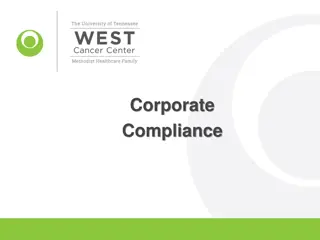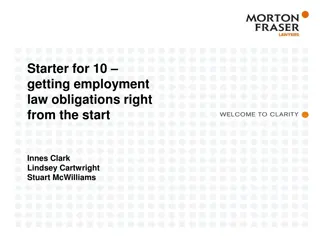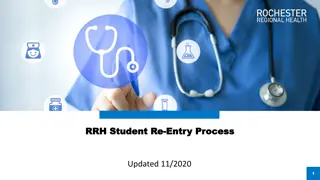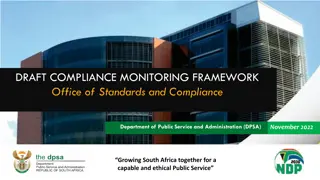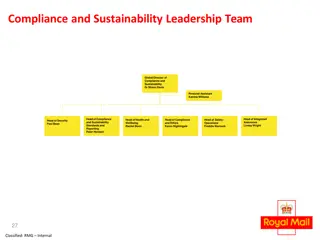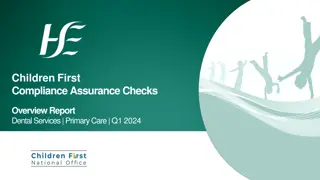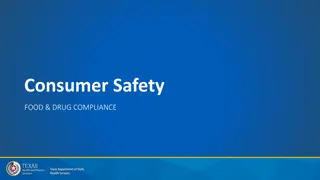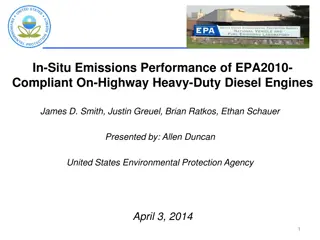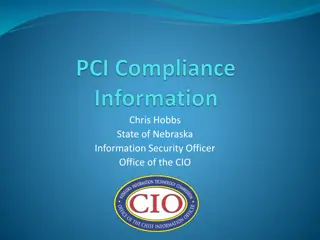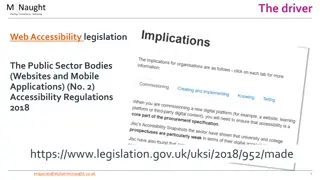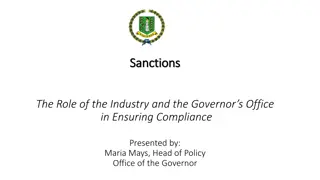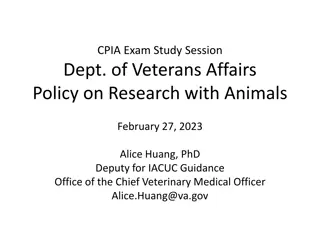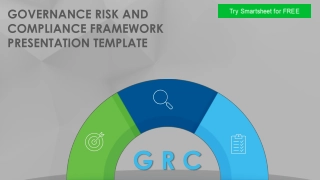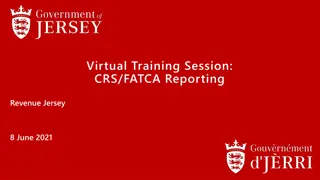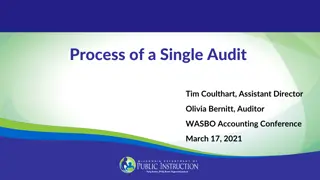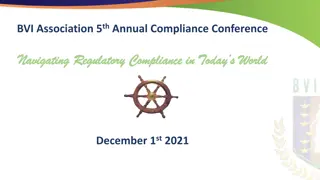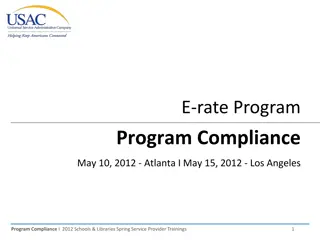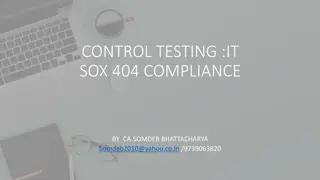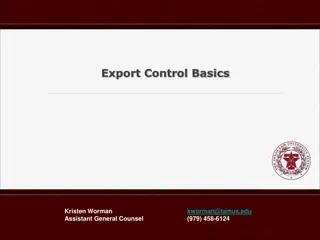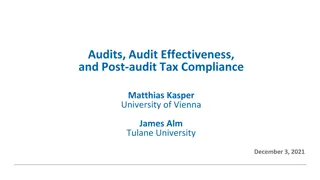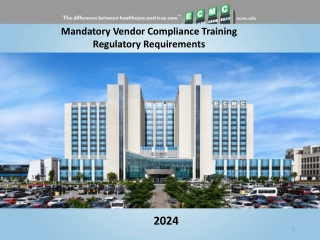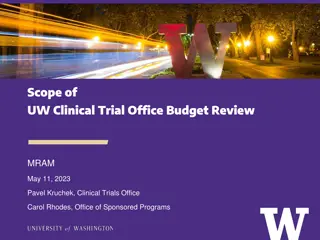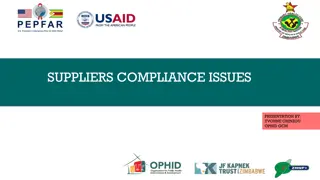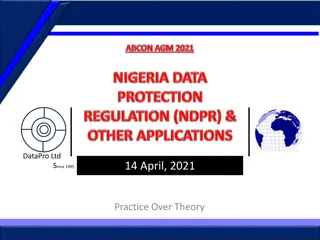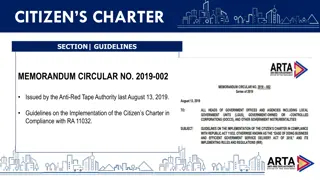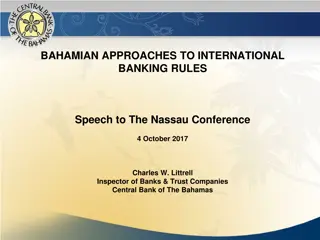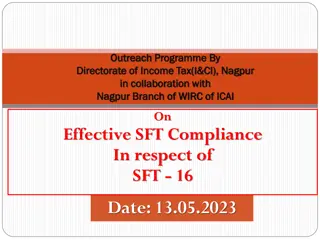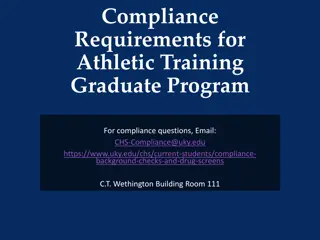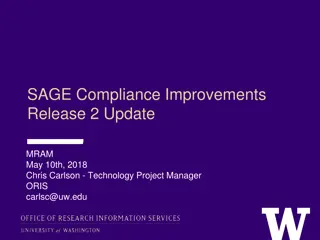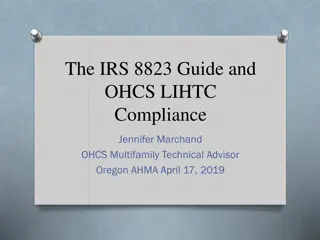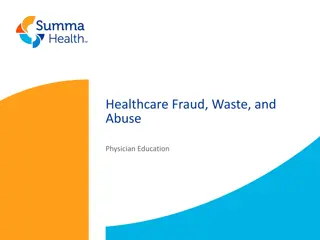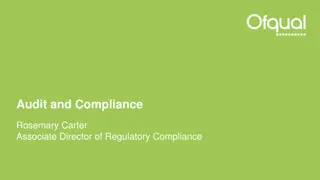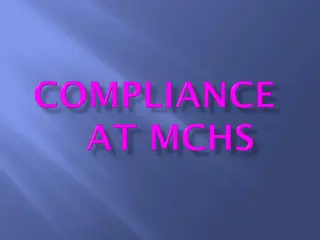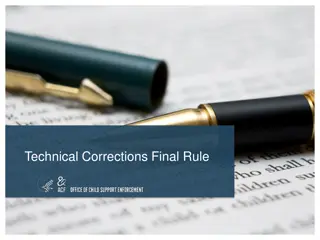Understanding the Role of CRB in Ensuring Compliance with ORICWA
Explore the significance of CRB in safeguarding the safety, stability, and supervision of children in foster care through impartial case review and advocacy. Learn about the CRB's mission, role in ensuring ODHS compliance with ORICWA, and key principles guiding their findings and decisions.
Download Presentation

Please find below an Image/Link to download the presentation.
The content on the website is provided AS IS for your information and personal use only. It may not be sold, licensed, or shared on other websites without obtaining consent from the author. Download presentation by click this link. If you encounter any issues during the download, it is possible that the publisher has removed the file from their server.
E N D
Presentation Transcript
O R IC W A and the C R B
ORICWA THINKING ABOUT THE NEW FINDINGS WHAT ARE THE NEW FINDINGS AND HOW DO WE MAKE THEM? QUESTIONS AND FURTHER INFORMATION
Thinking about the new findings Be prepared! Things may change. Get organized. Keep learning!
Thinking about the new findings The CRB s Mission: We provide a citizen voice on the safety, stability and supervision of children in foster care through impartial case review and advocacy. Our vision is that citizens will shape public policy and actively promote conditions to ensure that every child lives in a safe, secure, healthy and permanent home, preserving families whenever possible. What role does the CRB play in ensuring that ODHS is compliant with ORICWA? Big picture Impartiality: Ensuring compliance with the law Permanent Homes: Preventing delays in permanency for children Preserving Families: Restoring what children may have lost (or what their families lost prior to their birth) Tribes are family Safety, Security, and Health for All Children: Tribal resources
Thinking about the new findings When do we make these findings? When ORICWA applies, or When there is a reason to know that the child is an Indian child When in doubt, apply ORICWA TIP: Whenever any information arises indicating that a child is or may be an Indian child, CRB should make a recommendation to ODHS to follow up on that information immediately.
The New ORICWA CRB Findings Once you determine that ORICWA will apply to this review: Apply Active Efforts standard. This comes up in CRB reviews under Finding #1 and Finding #4. TIP: For those of you who are not CRB board members, you can take a look at Handout #3 which is the list of CRB findings that the boards are required to make at every review. TIP: Please see Handout #4 on Active Efforts. Make the new ORICWA sub-findings. These come up at CRB reviews under Findings #1, #5, #7 and #10. TIP: Please see Handout #2 which is the CRB s ORICWA Technical Assistance Guide which is a brief description of how to make these findings. CRB board members: Use this along with your notes document to prepare cases and think about the questions you want to ask ahead of time.
The New ORICWA CRB Findings Some over-arching principles: Consider rephrasing each new finding in your notes so that they are in terms that make the most sense to you, while remaining accurate. CRB board members make these findings the same way they make all their findings: By knowing what question they are trying to answer By thoughtfully questioning the parties at the review who are likely to have the information needed to answer those questions By diligent review of documents provided in discovery By making their best judgment at the time given the information available
The New ORICWA CRB Findings Finding #1: Our new ORICWA sub-finding is: Did active efforts eliminate the necessity for removal based on serious emotional or physical damage to the Indian child? ORS 419A.116(1)(L)(A) NOTE: In court, a qualified expert witness would testify about serious emotional or physical damage to the Indian child. But, the ORICWA legislation did not require or provide resources for qualified expert witnesses to attend CRB reviews to answer questions on this topic. There is a group looking at potential amendments to the legislation to address this. In the meantime, the CRB simply makes this finding the way we make all our findings.
The New ORICWA CRB Findings Finding #1: Our new ORICWA sub-finding is: Did active efforts eliminate the necessity for removal based on serious emotional or physical damage to the Indian child? The question, rephrased: Could this child have stayed in their own home once ODHS provided active assistance to the family, without a risk of the child experiencing serious damage? Two-step process
The New ORICWA CRB Findings Finding #1: Our new ORICWA sub-finding is: Did active efforts eliminate the necessity for removal based on serious emotional or physical damage to the Indian child? 1. Were Active Efforts made? If no, active efforts were not made, state that the finding is No. TIP: If there were no efforts that could have prevented the need for removal because it was an emergency, then state No, and this is because emergency removal of the child was necessary to prevent imminent physical damage or harm. This wording is in your new notes document. TIP: Please see Handout #1 for a suggested wording guide. If yes, active efforts were made, then continue to consider the rest of the question.
The New ORICWA CRB Findings Finding #1: Our new ORICWA sub-finding is: Did active efforts eliminate the necessity for removal based on serious emotional or physical damage to the Indian child? 2. Would remaining in the home have caused the child serious emotional or physical damage? NOTE: Serious emotional or physical damage is not caused by things like simple neglect, poverty, lack of resources, inadequate housing, periodic substance use, leaving the child with other relatives, nonconforming parental behavior, etc. Consider asking participants about the prevailing social and cultural standards and child rearing practices of the Indian child s tribe. Consider asking participants what conditions in the home at the time directly correlated to potential serious harm to the child. If the need for removal was not eliminated by ODHS s active efforts based on serious damage to the child, answer No to this finding. If there was not really a need for removal, answer Yes to this finding.
The New ORICWA CRB Findings Finding #5 or Finding #7: We make Finding #5 only in cases where the plan is NOT reunification, and Finding #7 only in cases where the plan IS reunification. ORICWA placement preferences are relevant to both new findings. Emily has already briefly touched on tribal placement preferences. TIP: Board members, there is a brief description of the placement preferences in your new notes document.
The New ORICWA CRB Findings Finding #5: Our new ORICWA sub-finding: Has ODHS made active efforts to place the child in a timely manner in accordance with the placement preferences for Indian children? ORS 419A.116(1)(L)(D) The question, rephrased: Has ODHS made timely, active efforts to place the child in a placement that falls into one of the placement preference categories? Consider asking about: Is the child in a placement that falls within the placement preferences? When did ODHS start looking for such a placement? If ODHS could not find the most preferred placement, such as placement with a tribal relative, did they continue down the list and exhaust all possible placement options that would comply with the placement preferences? For instance, if ODHS has looked for relatives but has not looked for other Indian foster homes that might not be biological relatives, then ODHS has not yet made all active efforts necessary to place the child in accordance with the placement preferences.
The New ORICWA CRB Findings Finding #5: Our new ORICWA sub-finding: Has ODHS made active efforts to place the child in a timely manner in accordance with the placement preferences for Indian children? Answer yes if: The child is in any placement that complies with placement preferences, and there was no unreasonable delay in placement. The child is not in a placement that complies with the placement preferences but ODHS has made active efforts to do so and no such placement has yet been located. Answer no if: ODHS did not start early to actively, thoroughly search for a placement that would fit the placement preferences.
The New ORICWA CRB Findings Finding #7: Our new ORICWA sub-finding: Has ODHS continued to maintain the relationship of the Indian child with potential adoption preferences? If not, has ODHS continued to search for a permanent placement that complies with the placement preferences? ORS 419A.116(1)(L)(C) The question, rephrased: Is ODHS keeping the child in contact with relatives or other members of the child s tribe? And, if they re not, are they at least continuing to look for relatives or other tribal members as potential permanent placements? TIP: This additional finding ONLY applies in reunification cases where the child is placed in a home outside the placement preferences. If the child is placed in a placement within the OR ICWA placement preferences, we just note that and do not make any additional findings under Finding #7.
The New ORICWA CRB Findings Finding #7: Our new ORICWA sub-finding: Has ODHS continued to maintain the relationship of the Indian child with potential adoption preferences? If not, has ODHS continued to search for a permanent placement that complies with the placement preferences? Consider asking: ODHS: Are you keeping the child in contact with relatives or other members of the child s tribe? ODHS: Please describe your current efforts to locate a potential permanent placement that complies with the placement preferences. Parents, Tribe, child s attorney, relatives: Are there ways that ODHS could be keeping this child in better contact with potential tribally-preferred placement options?
The New ORICWA CRB Findings Finding #10: Our new ORICWA sub-finding: Have active efforts eliminated the necessity for continued removal based on serious emotional or physical damage to the Indian child? The question, rephrased: Can an in-home plan be implemented with either parent today without the child sustaining serious emotional/physical damage? TIP: This additional finding applies ONLY in ORICWA cases where the permanency plan is reunification. TIP: Use the same principles we discussed for Finding #1. TIP: This finding is not about dismissing ODHS custody. It is about whether this child continues to require an out-of-home placement (ie: continued removal). Consider asking: ODHS: What safety issues remain in this home? What else would be necessary for an in-home plan to be possible? Tribe, ODHS and/or child s attorney: Do you think the remaining safety issues would cause serious damage to this child?
Digging Deeper If you feel lost, go back to the simple question you re trying to answer, and then ask ODHS or other parties that question. This will give you baseline information from which to continue your inquiry. Make sure to access the additional materials including this PowerPoint which will be posted on the CRB website after this training Consider listening to the training again (video will be posted soon) Contact your local CRB Field Manager with any questions; They will connect you with resources. Questions?



